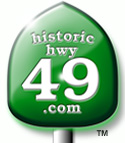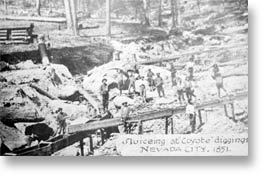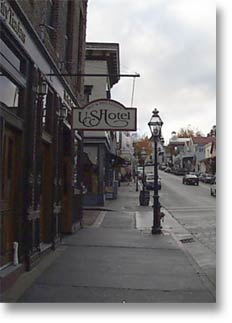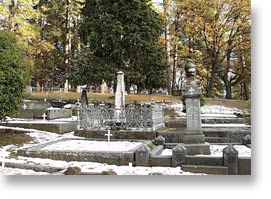                  
|

Snow
falls at the elevation where gold was pulled from
Deer Creek. Thus Nevada City derived its name after
the Spanish word for snow. Nevada City has carried
many monikers through its history; Caldwell's Upper
Store, Coyoteville, and Deer Creek Dry Diggings,
but Nevada was chosen in the 1850s to give the town
a cultured name. "City" was added later after
Nevada became a state, leaving many to feel as the
town's name had been stolen.

Originally a
mining camp founded along Deer Creek in 1849,
Nevada City rapidly became the largest and
wealthiest mining town in California. At one point
Nevada City was the third largest city in
California with a population of 10,000. Nevada
City's good fortune allowed miners and settlers to
enjoy plush gambling establishments, hotels,
saloons, and stores. However, like many big cities
that sprang up quickly during the rush for instant
wealth, early Nevada City shared a darker side of
claim jumping, murder, brothels and opium
dens.
By the 1850's
Nevada City's wealth began to wane, and as miners
moved on in search of new claims and stories of
gold and riches, a quiet and quaint city emerged.
Two firestorms in 1856 and 1863 raced through
Nevada City almost completely annihilating the
town. The beautiful east coast architecture that
stands today is testament to the will of the people
of Nevada City who rebuilt the town completely not
once but twice.
 Notable
accomplishments and people in Nevada City; Pacific
Gas and Electric was formed, Lester Pelton invented
the Pelton Water Wheel which was used throughout
the world in mining operations, and the Le Compton
hardrock mine was owned by George Hearst who's
efforts were in part responsible for the rise of
the famous newspaper empire. Notable
accomplishments and people in Nevada City; Pacific
Gas and Electric was formed, Lester Pelton invented
the Pelton Water Wheel which was used throughout
the world in mining operations, and the Le Compton
hardrock mine was owned by George Hearst who's
efforts were in part responsible for the rise of
the famous newspaper empire.
|




 Notable
accomplishments and people in Nevada City; Pacific
Gas and Electric was formed, Lester Pelton invented
the Pelton Water Wheel which was used throughout
the world in mining operations, and the Le Compton
hardrock mine was owned by George Hearst who's
efforts were in part responsible for the rise of
the famous newspaper empire.
Notable
accomplishments and people in Nevada City; Pacific
Gas and Electric was formed, Lester Pelton invented
the Pelton Water Wheel which was used throughout
the world in mining operations, and the Le Compton
hardrock mine was owned by George Hearst who's
efforts were in part responsible for the rise of
the famous newspaper empire.